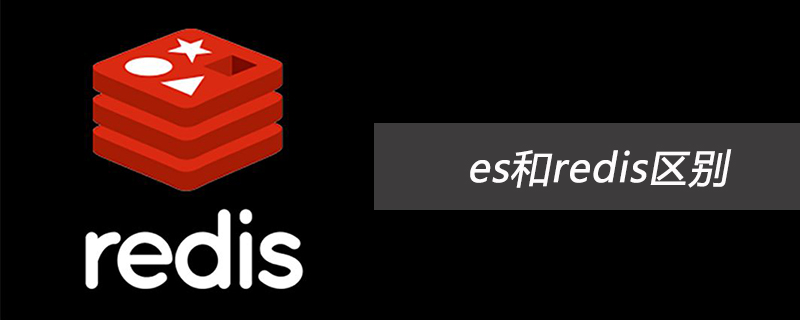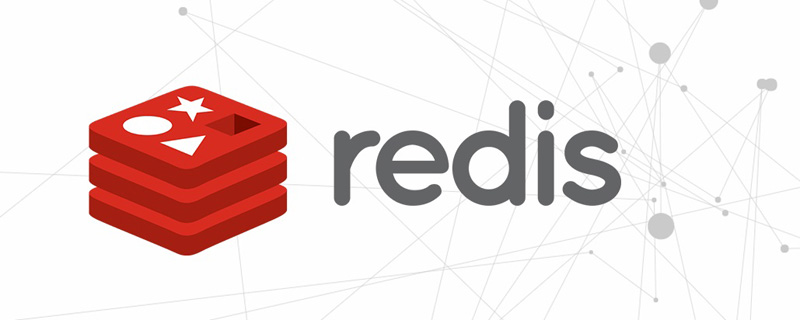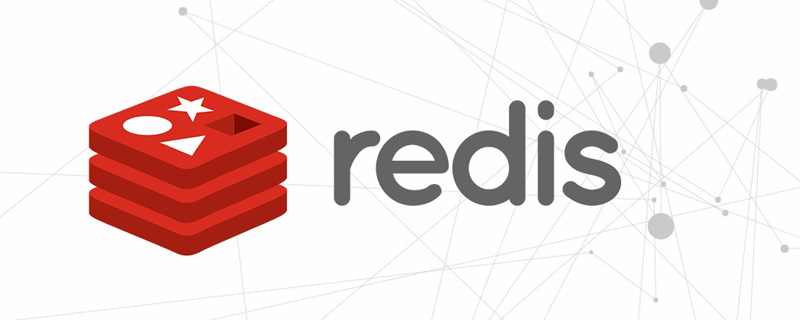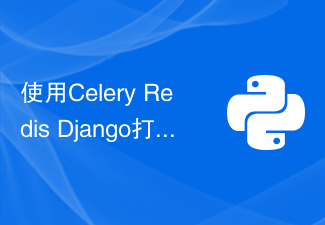 Backend Development
Backend Development Python Tutorial
Python Tutorial Application of Celery Redis Django technology in asynchronous task processing
Application of Celery Redis Django technology in asynchronous task processing
Application of Celery Redis Django technology in asynchronous task processing
With the development of web applications, processing a large number of asynchronous tasks has become more and more common. These tasks include sending emails, processing images, generating reports, etc. In order to improve the performance and scalability of the system, developers have adopted various asynchronous task processing techniques. Among them, Celery, Redis and Django are one of the commonly used solutions.
Celery is a distributed task queue that implements asynchronous execution of tasks through message passing. It provides a simple yet powerful API that can be integrated into Django applications. Redis is a high-performance key-value storage system that can be used as Celery's message broker and result store. Django is a popular Python web framework that provides a powerful database and model layer, as well as rich tools and plug-ins.
In this article, we will discuss how to use Celery and Redis in Django applications to handle asynchronous tasks and give some specific code examples.
First, we need to install Celery, Redis and Django and their dependency packages. They can be installed using the pip command:
pip install celery redis django
Next, we need to make some configurations in the settings.py file of the Django application. First, we need to set Celery's Broker and Backend to Redis. Add the following configuration in the settings.py file:
# Celery配置 CELERY_BROKER_URL = 'redis://localhost:6379/0' CELERY_RESULT_BACKEND = 'redis://localhost:6379/0'
Then, we need to create a file named tasks.py in Django’s home directory. In this file we will define the asynchronous task. Here is a simple example:
from celery import shared_task
@shared_task
def send_email(to, subject, message):
# 发送电子邮件的代码
# ...
passNext, we need to call the asynchronous task in Django’s view function (or class view). Here is an example:
from .tasks import send_email
def my_view(request):
# 当接收到HTTP请求时,调用异步任务
send_email.delay("to@example.com", "Hello", "This is a test email.")
return HttpResponse("Email has been sent!") In this example, we call an asynchronous task named send_email and pass the recipient’s email address, subject, and message. Using the .delay() method, the task will be executed asynchronously in the background without blocking the current HTTP request.
Finally, we need to start Celery's worker process to handle asynchronous tasks. Execute the following command on the command line:
celery -A your_project_name worker --loglevel=info
In this command, your_project_name is the name of your Django project.
When any user who receives an HTTP request calls an asynchronous task, Celery's worker process will receive the tasks from Redis and execute them. It also stores the results of the task in Redis for querying when needed.
To sum up, the introduction of Celery Redis Django technology can help us optimize the performance and scalability of web applications, especially when processing a large number of asynchronous tasks. In this article, we learned how to install and configure Celery, Redis, and Django, as well as how to define and call asynchronous tasks. By rationally utilizing these technologies, we can better manage and process asynchronous tasks and improve the efficiency of web applications.
The above is a brief introduction to the application of Celery Redis Django technology in asynchronous task processing. I hope it will be helpful to you. If you have any questions, please feel free to ask.
The above is the detailed content of Application of Celery Redis Django technology in asynchronous task processing. For more information, please follow other related articles on the PHP Chinese website!
 怎么用Python Celery动态添加定时任务May 13, 2023 pm 03:43 PM
怎么用Python Celery动态添加定时任务May 13, 2023 pm 03:43 PM一、背景实际工作中会有一些耗时的异步任务需要使用定时调度,比如发送邮件,拉取数据,执行定时脚本通过celery实现调度主要思想是通过引入中间人redis,启动worker进行任务执行,celery-beat进行定时任务数据存储二、Celery动态添加定时任务的官方文档celery文档:https://docs.celeryproject.org/en/latest/userguide/periodic-tasks.html#beat-custom-schedulerscelery自定义调度类说明
 es和redis区别Jul 06, 2019 pm 01:45 PM
es和redis区别Jul 06, 2019 pm 01:45 PMRedis是现在最热门的key-value数据库,Redis的最大特点是key-value存储所带来的简单和高性能;相较于MongoDB和Redis,晚一年发布的ES可能知名度要低一些,ES的特点是搜索,ES是围绕搜索设计的。
 一起来聊聊Redis有什么优势和特点May 16, 2022 pm 06:04 PM
一起来聊聊Redis有什么优势和特点May 16, 2022 pm 06:04 PM本篇文章给大家带来了关于redis的相关知识,其中主要介绍了关于redis的一些优势和特点,Redis 是一个开源的使用ANSI C语言编写、遵守 BSD 协议、支持网络、可基于内存、分布式存储数据库,下面一起来看一下,希望对大家有帮助。
 Python 强大的任务调度框架 Celery!Apr 12, 2023 pm 09:55 PM
Python 强大的任务调度框架 Celery!Apr 12, 2023 pm 09:55 PM什么是 celery这次我们来介绍一下 Python 的一个第三方模块 celery,那么 celery 是什么呢? celery 是一个灵活且可靠的,处理大量消息的分布式系统,可以在多个节点之间处理某个任务; celery 是一个专注于实时处理的任务队列,支持任务调度; celery 是开源的,有很多的使用者; celery 完全基于 Python 语言编写;所以 celery 本质上就是一个任务调度框架,类似于 Apache 的 airflow,当然 airflow 也是基于 Python
 实例详解Redis Cluster集群收缩主从节点Apr 21, 2022 pm 06:23 PM
实例详解Redis Cluster集群收缩主从节点Apr 21, 2022 pm 06:23 PM本篇文章给大家带来了关于redis的相关知识,其中主要介绍了Redis Cluster集群收缩主从节点的相关问题,包括了Cluster集群收缩概念、将6390主节点从集群中收缩、验证数据迁移过程是否导致数据异常等,希望对大家有帮助。
 Python强大的任务调度框架Celery使用方法是什么May 09, 2023 am 11:28 AM
Python强大的任务调度框架Celery使用方法是什么May 09, 2023 am 11:28 AM什么是celery这次我们来介绍一下Python的一个第三方模块celery,那么celery是什么呢?celery是一个灵活且可靠的,处理大量消息的分布式系统,可以在多个节点之间处理某个任务;celery是一个专注于实时处理的任务队列,支持任务调度;celery是开源的,有很多的使用者;celery完全基于Python语言编写;所以celery本质上就是一个任务调度框架,类似于Apache的airflow,当然airflow也是基于Python语言编写。不过有一点需要注意,celery是用来调
 详细解析Redis中命令的原子性Jun 01, 2022 am 11:58 AM
详细解析Redis中命令的原子性Jun 01, 2022 am 11:58 AM本篇文章给大家带来了关于redis的相关知识,其中主要介绍了关于原子操作中命令原子性的相关问题,包括了处理并发的方案、编程模型、多IO线程以及单命令的相关内容,下面一起看一下,希望对大家有帮助。
 使用Celery Redis Django打造高可用异步任务处理平台Sep 26, 2023 pm 12:29 PM
使用Celery Redis Django打造高可用异步任务处理平台Sep 26, 2023 pm 12:29 PM使用CeleryRedisDjango打造高可用异步任务处理平台概述随着互联网的迅猛发展和应用系统的复杂化,对于异步任务的处理需求也越来越高。Celery是一个强大的分布式任务队列框架,提供了一种简单易用的方式来处理异步任务。Redis是一个高性能的in-memory数据存储系统,被广泛应用于缓存、队列等场景。Django是一个高效的Web应用框架,具有


Hot AI Tools

Undresser.AI Undress
AI-powered app for creating realistic nude photos

AI Clothes Remover
Online AI tool for removing clothes from photos.

Undress AI Tool
Undress images for free

Clothoff.io
AI clothes remover

AI Hentai Generator
Generate AI Hentai for free.

Hot Article

Hot Tools

SublimeText3 Mac version
God-level code editing software (SublimeText3)

MantisBT
Mantis is an easy-to-deploy web-based defect tracking tool designed to aid in product defect tracking. It requires PHP, MySQL and a web server. Check out our demo and hosting services.

MinGW - Minimalist GNU for Windows
This project is in the process of being migrated to osdn.net/projects/mingw, you can continue to follow us there. MinGW: A native Windows port of the GNU Compiler Collection (GCC), freely distributable import libraries and header files for building native Windows applications; includes extensions to the MSVC runtime to support C99 functionality. All MinGW software can run on 64-bit Windows platforms.

WebStorm Mac version
Useful JavaScript development tools

Safe Exam Browser
Safe Exam Browser is a secure browser environment for taking online exams securely. This software turns any computer into a secure workstation. It controls access to any utility and prevents students from using unauthorized resources.





